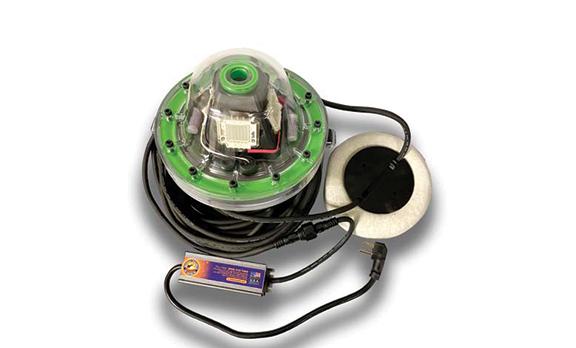The Internet of Things (IoT) and Advanced Web Security Testing: A New Front

The Internet of Things (IoT) has transformed industries and revolutionised daily life, connecting millions of devices worldwide. From smart homes and cities to wearable tech and industrial systems, IoT is driving an era of unparalleled convenience and efficiency.
However, this interconnected world also introduces significant cybersecurity risks. With more endpoints, potential vulnerabilities multiply, creating an urgent need for advanced web security testing. Read on as we explore the relationship between IoT and advanced security testing, highlighting the challenges and essential strategies to safeguard IoT ecosystems.
1. Introduction to IoT and Its Growing Influence
IoT refers to the network of physical devices—ranging from home appliances to industrial machines—that are embedded with sensors, software, and other technologies to connect and exchange data over the internet.
By 2025, it's predicted that there will be over 30.9 billion IoT devices globally. These devices make life more convenient and expand the cyberattack surface significantly, requiring new and advanced methods of web security testing.
2. Why IoT Security Matters
The nature of IoT is such that every connected device can be a gateway to critical systems or personal information. For example, a compromised smart device in a home network could give a hacker access to sensitive information or control over other devices.
In an industrial setting, an IoT security breach could shut down entire production lines. The stakes are high, and traditional security testing methods may not fully cover the unique complexities of IoT ecosystems.
3. The Expanded Attack Surface of IoT
With each new IoT device, the network attack surface expands. This larger surface increases the risk of unauthorised access, data breaches, and attacks.
As IoT devices often lack robust security features, they can become prime targets for cybercriminals. Advanced web security testing must now account for this rapidly expanding network of devices and the unique ways they communicate.
4. Common Security Challenges in IoT
Several challenges are unique to IoT security, including limited device resources, heterogeneity in device types, and the often lax security protocols of manufacturers.
Many IoT devices have minimal computing power and limited capacity for sophisticated encryption or security features. Furthermore, with so many different device manufacturers, ensuring security across various platforms becomes a monumental task.
5. Understanding IoT Communication Protocols
IoT devices often use specialised communication protocols such as MQTT, CoAP, and Zigbee. These protocols differ from traditional web communication methods and may introduce vulnerabilities that hackers can exploit.
Security testing must now adapt to these protocols, understanding the potential flaws in how data is transmitted between devices and systems.
6. Vulnerabilities Unique to IoT Devices
IoT devices are susceptible to several types of vulnerabilities, including insecure firmware updates, poor password management, and unsecured communication channels.
Hackers can easily exploit default credentials or vulnerabilities left by manufacturers, especially in devices that are rarely patched or updated. Advanced security testing should focus on these specific areas of weakness to mitigate cyber risks.
7. The Role of Advanced Web Security Testing in IoT
Advanced web security testing for IoT goes beyond traditional penetration testing. It involves a comprehensive approach that tests the entire IoT ecosystem—from individual devices to cloud services and their communication.
Testing must include
vulnerability assessments, code reviews, protocol analysis, and network traffic
monitoring to identify and fix potential security gaps.
8. Penetration Testing in IoT Ecosystems
Penetration testing is critical for discovering vulnerabilities in IoT environments. However, it requires specific expertise in IoT systems and protocols.
Testers must simulate real-world attacks to assess how well IoT devices and their associated systems can withstand cyber threats. This type of testing identifies weak points where a hacker could potentially break into a network or system through an IoT device.
9. Securing IoT Gateways
IoT gateways act as intermediaries between IoT devices and the cloud or other systems. They aggregate data and manage communication between devices. As gateways play a central role in IoT infrastructure, they are a key target for attackers.
Advanced security testing must ensure that these gateways are properly secured and address any vulnerability before hackers exploit them.
10.Authentication and Encryption in IoT Security
Strong authentication and encryption are essential in IoT security. Ensuring that devices and users are properly authenticated prevents unauthorised access, while encryption protects data in transit.
However, implementing encryption in low-power IoT devices can be challenging due to resource limitations. Testing the effectiveness of these security measures is vital to ensure that sensitive data is not exposed.
11.IoT and Cloud Security Testing
IoT devices often rely on cloud infrastructure for data storage and processing. This introduces additional layers of complexity when it comes to security.
Cloud security testing must be integrated into IoT testing strategies to ensure that data is protected both in transit and at rest. Testing must assess potential vulnerabilities in cloud configurations, API security, and access controls.
12.Importance of Continuous Security Monitoring
Given the dynamic nature of IoT systems, continuous monitoring and testing are crucial. New devices are constantly being added to networks, and existing devices may undergo updates or changes.
Without continuous monitoring, these changes could introduce new vulnerabilities. Security testing is not a one-time process but rather an ongoing effort to maintain the integrity of IoT systems.
13.The Impact of Regulations on IoT Security
As IoT continues to grow, governments and regulatory bodies are imposing stricter requirements for security and privacy. Compliance testing is now an essential part of web security testing for IoT devices, ensuring that they meet regulatory standards for data protection.
14.Future Trends in IoT and Web Security Testing
As the IoT landscape evolves, so too must web security testing. Emerging trends include the use of artificial intelligence (AI) for threat detection, automation in security testing processes, and blockchain for secure data transmission.
These technologies hold great promise for enhancing the security of IoT ecosystems, but they also bring new challenges that need to be addressed through advanced testing methods.
15.How to Choose the Right Security Testing Partner
With the complexity of IoT systems, businesses need to choose the right security testing partner.
Look for providers with expertise in web and IoT security who understand the unique challenges of the IoT ecosystem. They should offer comprehensive testing solutions that cover everything from device security to cloud infrastructure and regulatory compliance.
Secure Your IoT Ecosystem with Lean Security
Don’t let vulnerabilities compromise your IoT devices and data. Lean Security offers comprehensive web security testing tailored to the unique challenges of IoT ecosystems. Protect your business with expert penetration testing, continuous monitoring, and cutting-edge solutions.
Contact them today to safeguard your connected future!










Comments